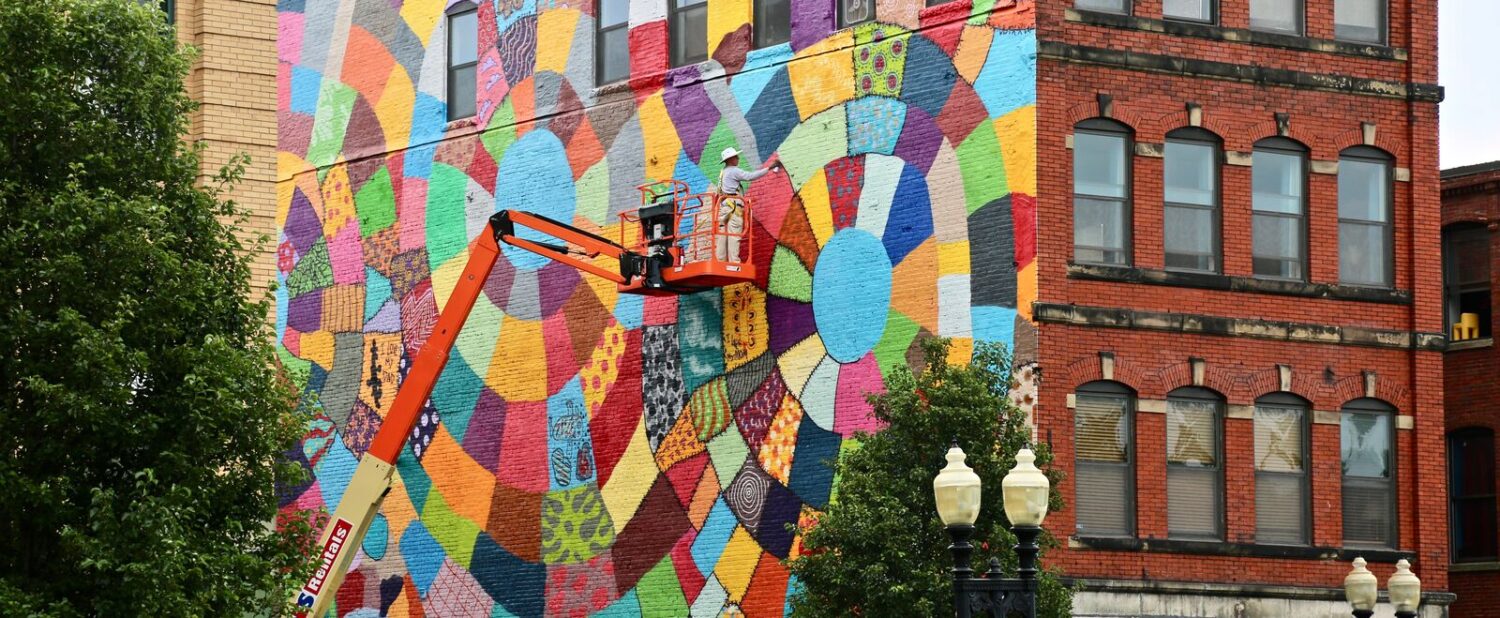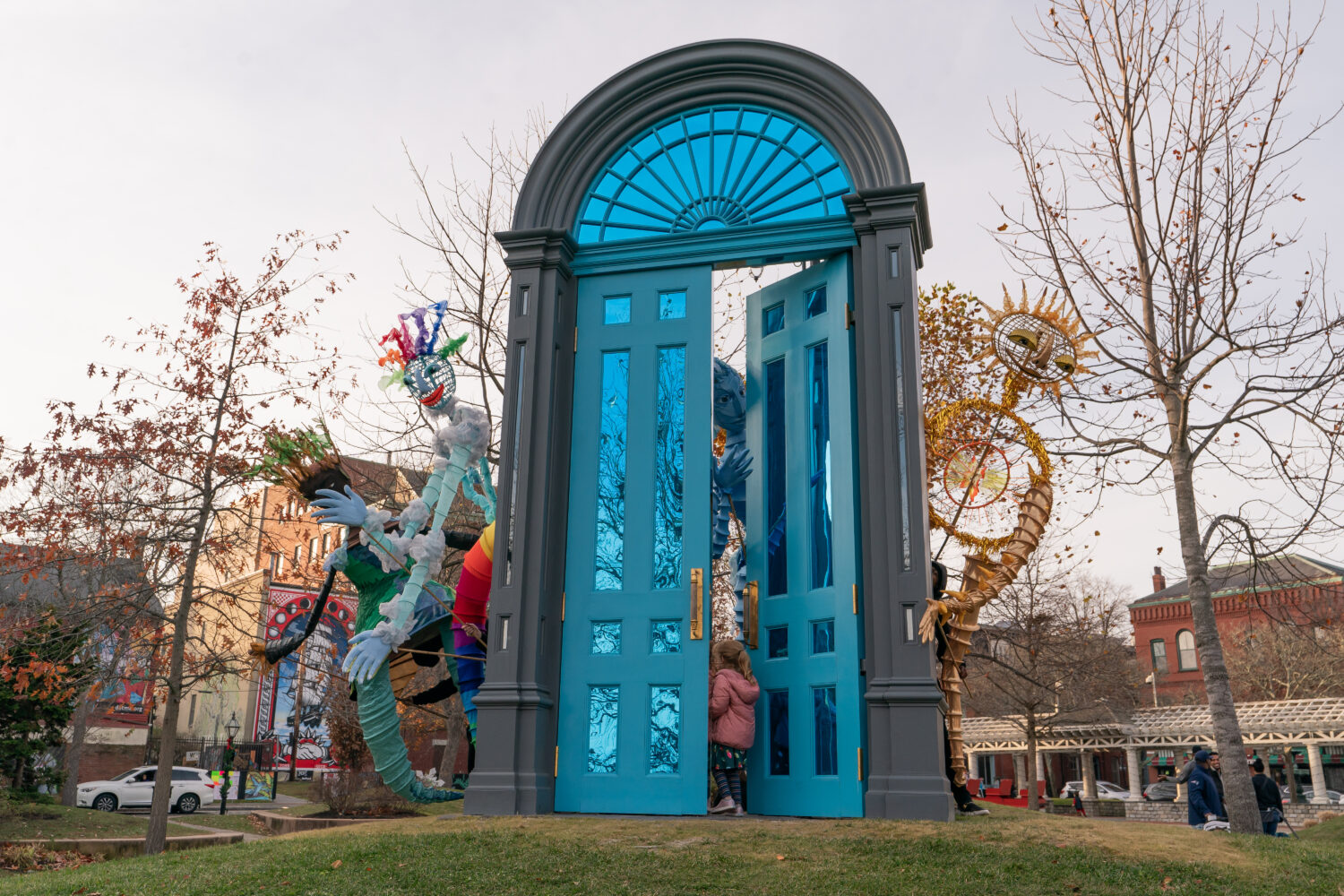MASS MoCA’s Assets for Artists team pursues racial equity with BIPOC partner CreateWell Fund.
Written by Heidi Shin
The following is one of two articles highlighting the recent anti-racist equity work at MASS MoCA’s Assets for Artists program. This post focuses on the launch of the month-long BIPOC artist’s residency, which was a collaboration between the CreateWell Fund team and Assets for Artists.
Equity work can feel daunting for some arts leaders, particularly in an age of “cancel culture” when the learning curve is steep. But in recent years, the Assets for Artists (A4A) team at MASS MoCA has seen racial equity work – despite its inherent risks – as necessary.
More significantly, rather than designing their own racial equity programs, the Assets for Artists team sought collaborations with existing BIPOC artists and arts organizations, so that each partner could bring their strengths and expertise to the table.
For example, in 2021, A4A partnered with the CreateWell Fund and together they hosted a BIPOC artists’ residency: “The Converging Liberations Residency” at MASS MoCA. CreateWell Fund envisioned and drove the design of the residency while A4A intentionally took on a supportive role, making the resources and space available for the vision to come to life. The CreateWell Fund team was led by artists bashezo, Cierra Peters, and Nadroj Nina Holmes. A4A Director Blair Benjamin and Assistant Director Molly Rideout led the Assets for Artists team in this partnership.
They hosted a group of 12 BIPOC artists onsite at The Studios at MASS MoCA in North Adams, Massachusetts in the Summer of 2021. The month-long residency provided furnished studio space, housing, communal meals, and most significantly the time and space for artistic experimentation.
Nadroj Holmes, one of the residency’s co-designers from the CreateWell Fund described it as a place where BIPOC artists could create and be in community: “Without having to worry about what other people are thinking, without having to carry the burden of others’ expectations of you, like a weight on your shoulders.”
From their anti-racist work, the two collaborating groups offered a number of ideas for helping arts institutions to work towards racial equity:
- Ensure fair pay
- Try ripple gifting (+1 invitations) to diversify your participants
- Communicate clearly and often, acknowledge there may be differences in decision-making styles.
- Don’t rely on an open-door policy. Proactively identify and provide for the needs of BIPOC participants.
- Be intentional about building social capital and networks for the BIPOC community
- Take risks and don’t be afraid of making mistakes with partners.
Throughout the planning processes and the residency, the CreateWell and Assets for Artists teams asked: What does true partnership with BIPOC artists look like?
In developing the artist residency at The Studios at MASS MoCA, each of the partners brought their expertise to the table. The Assets for Artists team contributed the administrative infrastructure to operate a residency, for example managing finances and meeting spaces, as well as handling logistics for things like food and housing for the month-long residency.
The CreateWell team meanwhile, understood the experience of BIPOC artists and their needs and developed the programming, which centered around BIPOC artists building resiliency, sharing ideas and skills.
“It was much more of a learning experience for us,” A4A’s Assistant Director Molly Rideout shared, “as to how a majority white staff can turn over the decision-making (to BIPOC artists).”
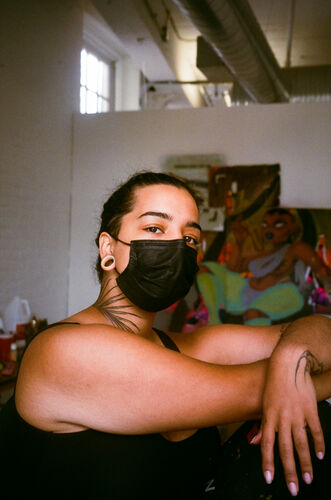
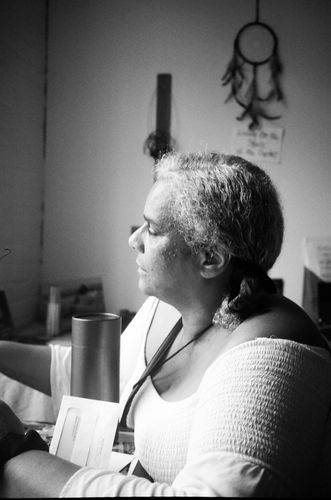
Before the residency began, the co-designers realized that diversifying the residency’s participants required strategic thinking and restructuring around the application process.
To put it simply, not everyone gets to hear about artist residency opportunities or know the best practices around applying, to increase the chances of being accepted. Social networks can play a significant role in artists’ access to this kind of information.
Also, some may not have the professional equipment to do things like take photos of their portfolio, which could increase an artist’s chance of being awarded a grant or a residency. Marketing to a gallery, or a performing center, and grant-writing may also be new skills.
In other words A4A’s Molly Rideout shared: “There’s a way that wealth breeds wealth.”
Nadroj and their co-designers took this into account when selecting participants for the BIPOC artists residency. They tried a different approach to selecting residency participants to diversify the cohort: Ripple Gifting.
The team selected an initial group of BIPOC artists for the residency. They then trusted the selected artists to identify another artist from their own social networks, who they believed would contribute meaningfully to the residency, as a kind of +1 invitation.
They were deliberate about building a cohort, not just selecting individual artists who were seeking access to the larger institution of MASS MoCA.
Instead they selected artists who would complement one another and who sought to contribute to the BIPOC artist community. They were deliberate about helping build the social capital and networks that BIPOC artists might not yet have.
The result was a wonderfully diverse group of artist residents, who might not otherwise have been identified for an opportunity like this. The residency cohort was intergenerational, including recent graduates and artists in their 60s and 70s, who were considered “community elders.” There were also artists who had never exhibited before, and others who had significant solo shows. The residency welcomed more “traditional artists” who pursued genres like painting, but they also had collage artists and performance artists, and even a community organizer focused on reparations work.
Nadroj Holmes noted: “At one point I stopped using the term artist or the title artist and just started saying ‘creative.’”
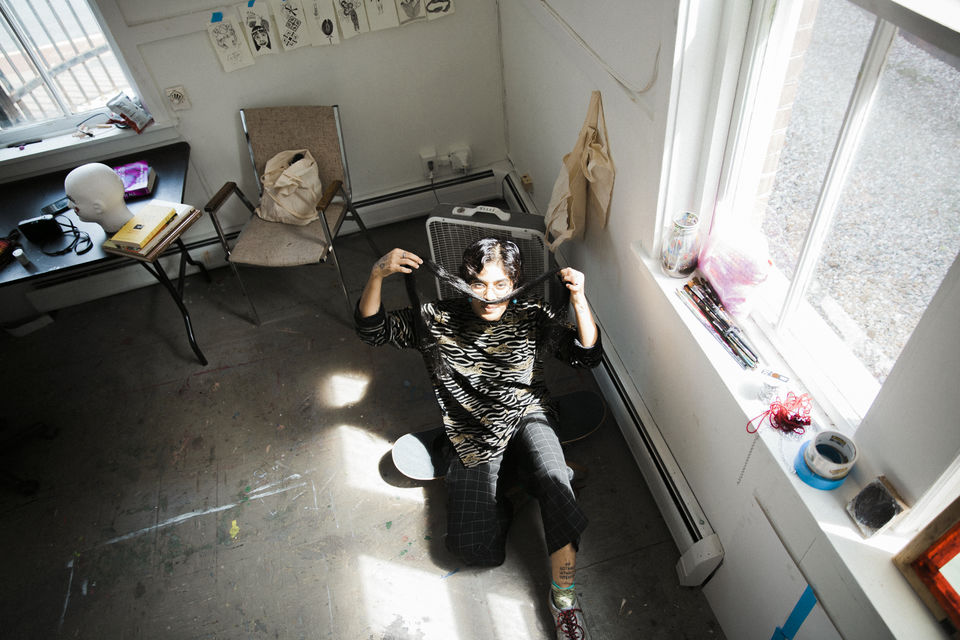
When designing a residency for BIPOC artists, Nadroj said it’s also important to consider whether artists from traditionally marginalized backgrounds will have the funds needed for travel, meals, and the ability to cover the cost of living during their time away from paid work and other responsibilities.
Nadroj noted that the idea for the BIPOC artist residency, was in fact birthed from an experience they had as a Black artist at a MASS MoCA residency years ago: “I was the only Black person that could stay for the entire time though, just because I was at a point in my life where I was able to not have to worry about financial obligations, like the other Black person who was there.”
Assets for Artists Director Blair Benjamin added: “Just offering a free residency is not the same as a residency that comes with funds to be able to take time away from a job that you might have or to deal with other parenting responsibilities or childcare…this is something that every artist deserves.”
The CreateWell team also understood that some BIPOC artists might not feel safe in North Adams – the primarily white community where the art residency took place. CreateWell responded by creating a “Green Resource Guide” for North Adams. It was a paper guide with workshop descriptions and a map that unfolded, highlighting BIPOC-owned businesses locally.
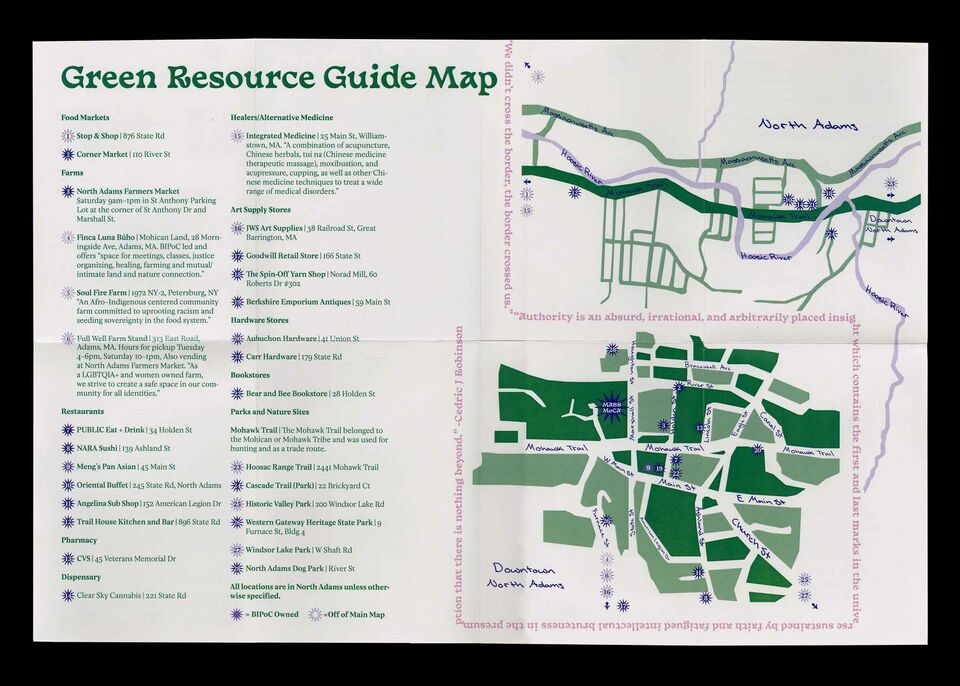
The title was a reference to the Green Book, which co-designer Nadroj described as “a book by African Americans, pre-integration, to show safe places to go, safe routes to travel.”
There was only one incident where organizers recalled the BIPOC artists’ residency not having gone well for the participants as a group.
A group of the BIPOC artist residents were eating ice cream one day in North Adams when a white woman approached the group, asking to take their photograph, presumably because of their race.
“We were just standing there, minding our own business, you know, eating our ice cream, when this random white woman just came up and was like, hey, can I take a picture? It felt so bizarre,” Nadroj shared.
The group collectively responded that they didn’t wish to be photographed.
Here were some additional lessons shared by the collaborators about true partnership in anti-racist equity work.
Decision making looked different for each of their groups, and working together meant being flexible.
CreateWell was a flat organization, which used a consensus-based decision-making model (called fist-to-five) – a process that often took time. Assets for Artists, a program of MASS MoCA, was a larger hierarchical organization, where faster-paced decision-making was often assigned to a single person. Leaders from both groups worked to find solutions. How could CreateWell continue to give voice to all the decision-makers involved while working with the timelines that Assets for Artists was more accustomed to?
Finding these solutions often meant being clear and direct with each other about their processes and needs. For example, Assets for Artists Director Blair Benjamin realized that some things would have been better shared via a quick phone call, rather than a chain of emails.
“We’ve learned that you need to take that extra time and care when communicating around issues of anti-racism,” A4A’s Director Blair Benjamin shared. “So that your intentions are fully understood so that the words you choose are landing in the ways that they’re intended and you’re not doing harm.”
While Assets for Artists offered an open-door policy, where residency participants were invited to share any of their needs or concerns, staff from the arts organization quickly learned that sometimes this isn’t enough. It’s better to be proactive about creating and providing for BIPOC participants’ needs.
The artist residency planners also recognized there was an incident when one resident’s housing needs were not met. The participant had limited mobility access and upon arrival could not access the stairs in the artist dorms. In the future, the team plans to consider a wider range of issues around diversity, including gender identity and physical disability.
“So I think that when we talk (about) politics and identity there’s always going to be some feeling of risk involved,” CreateWell’s Nadroj Nina Holmes shared. “But I don’t want to say it felt risky, it just felt needed. It felt like it was so necessary.”
A4A Director Blair Benjamin shared: “And you know we make mistakes on a regular basis, and try to learn from that and make fewer mistakes as we go along. It feels both maybe somewhat risky, but so just obviously necessary.”
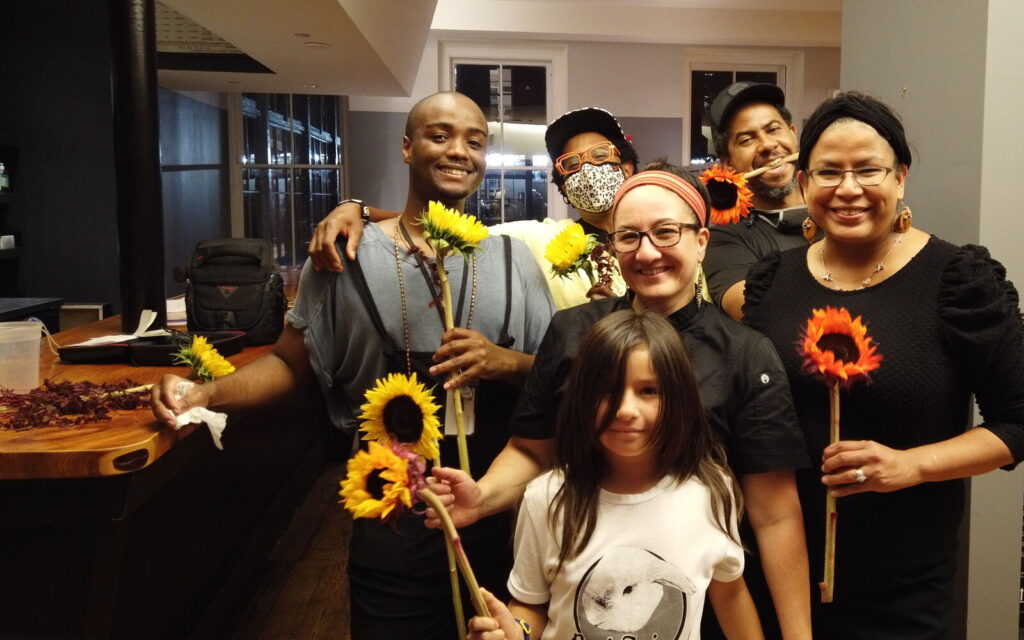
CreateWell’s Nadroj Nina Holmes shared one of their most meaningful memories from the BIPOC artist residency. Sitting under the tents in the mountains with the other artist residents after dinner one evening, it began to rain:
“What did it feel like to be under that together in the fog, in the rain? It felt so safe and affirming. As someone that was always trying to be on guard, it became very easy to let my guard down,” they recalled.
On the final day of the BIPOC artist residency, Nadroj’ grandmother visited them at the residency site in North Adams, Massachusetts.
Nadroj recalled that as a child their grandmother attended a school that was racially segregated, and as the process of desegregation began, she was the first Black girl at her elementary school.
“Like the textbooks make it feel like it was so long ago, but yes, it was their lives,” Nadroj shared.
Nadroj also wondered: What would it look like for someone like their grandmother to attend a BIPOC artist residency?
Throughout life she had created art, though she was never paid to do the work professionally. What would their grandmother’s contribution to the artist landscape look like?
“We should be hearing from them,” Nadroj added. “Absolutely, their stories are absolutely a vital part of history.
To learn about A4A’s other anti-racist equity efforts, including increasing the number of BIPOC workshop facilitators and participants, and creating a BIPOC artists’ advisory board, click here.

